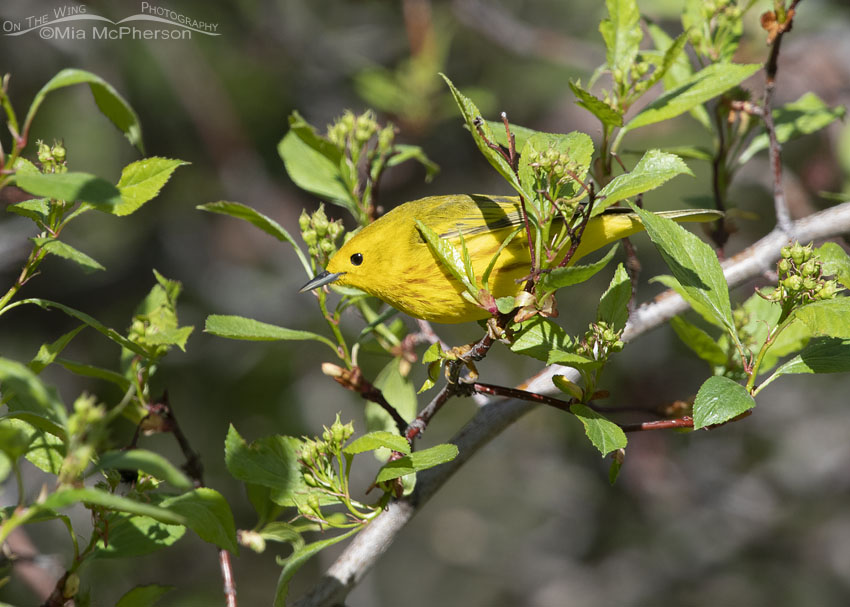 Male Yellow Warbler foraging – Nikon D500, f7.1, 1/1000, ISO 500, Nikkor 500mm VR with 1.4x TC, natural light
Male Yellow Warbler foraging – Nikon D500, f7.1, 1/1000, ISO 500, Nikkor 500mm VR with 1.4x TC, natural light
Yesterday morning was spent up in the mountain canyons again photographing the birds I found at the higher elevations, the birds I saw the most of were Yellow Warblers, birds who look like sunshine on the wing. I watched them glean insects from the trees and shrubs they visited. Photographing them is extremely challenging because these tiny dynamos don’t stay still for long.
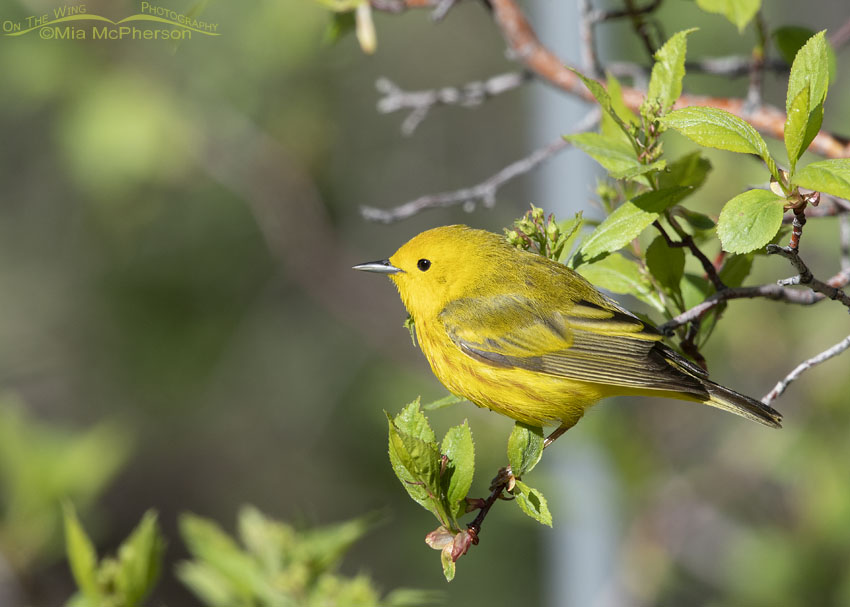 Perched Yellow Warbler – Nikon D500, f7.1, 1/1000, ISO 500, Nikkor 500mm VR with 1.4x TC, natural light
Perched Yellow Warbler – Nikon D500, f7.1, 1/1000, ISO 500, Nikkor 500mm VR with 1.4x TC, natural light
I have a bunch of photos to delete from the images I took yesterday because I wasn’t able to lock focus on the bird, the eyes were missing catch lights, or I had body parts that were clipped because these warblers move so much but I did manage to take a few images of them that I am happy with. I saw a few female Yellow Warblers yesterday but they seemed to stay mostly hidden while the males popped out into the open now and then.
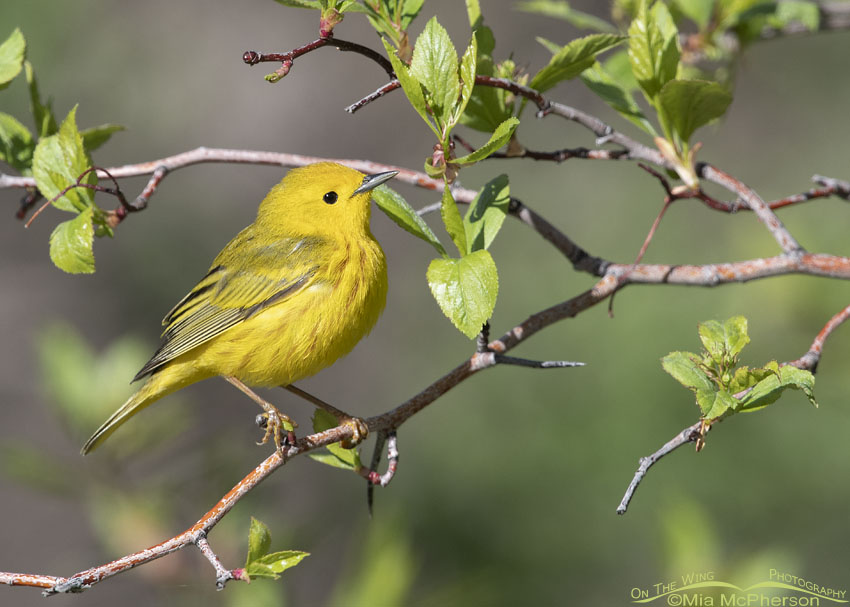 Male Yellow Warbler perched on a tree – Nikon D500, f7.1, 1/1250, ISO 500, Nikkor 500mm VR with 1.4x TC, natural light
Male Yellow Warbler perched on a tree – Nikon D500, f7.1, 1/1250, ISO 500, Nikkor 500mm VR with 1.4x TC, natural light
It was delightful to have my Mom along because she helped me spot the warblers I photographed and because I love hearing the excitement in her words about our feathered friends, the animals we saw, and to hear what she thought about the scenery we were seeing.
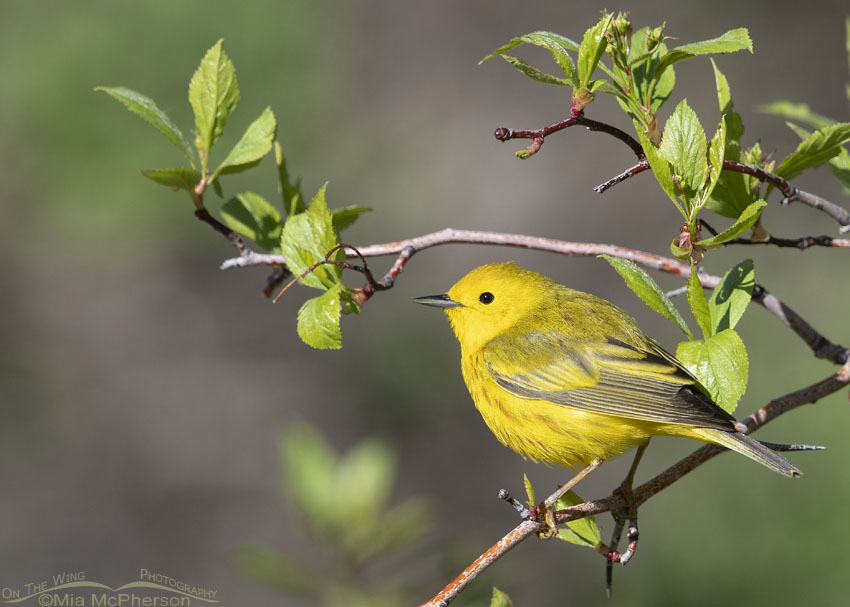 Yellow Warbler male in the mountains – Nikon D500, f7.1, 1/1250, ISO 500, Nikkor 500mm VR with 1.4x TC, natural light
Yellow Warbler male in the mountains – Nikon D500, f7.1, 1/1250, ISO 500, Nikkor 500mm VR with 1.4x TC, natural light
Even though the male Yellow Warblers were mostly focused on foraging they also stopped and sang quite often.
A few facts about Yellow Warblers:
- Yellow Warblers are small, uniformly yellow warblers with unmarked faces, rounded heads, tiny bills and jet black eyes. The males have reddish streaks on their underparts. There are other forms of Yellow Warblers found in Mexico, Central America and the Caribbean. Males in those forms have chestnut on their heads.
- Yellow Warblers are migratory. During the breeding season Yellow Warblers can be found as far north as the Arctic Circle and as far south as southern Mexico, they spend winters in Central and South America.
- Their preferred habitats include thickets, marsh edges, swamps, willow edged streams, bogs, farmlands, forest edges and suburban gardens.
- Yellow Warblers eat spiders, insects and will also eat berries. They forage by gleaning.
- Yellow Warblers lay 3 to 6 eggs which hatch in 11 to 12 days, the females incubate and they are monogamous.
- A group of Yellow Warblers can be called a “stream” or “trepidation” of warblers.
- Yellow warblers can live to be more than 11 years of age.
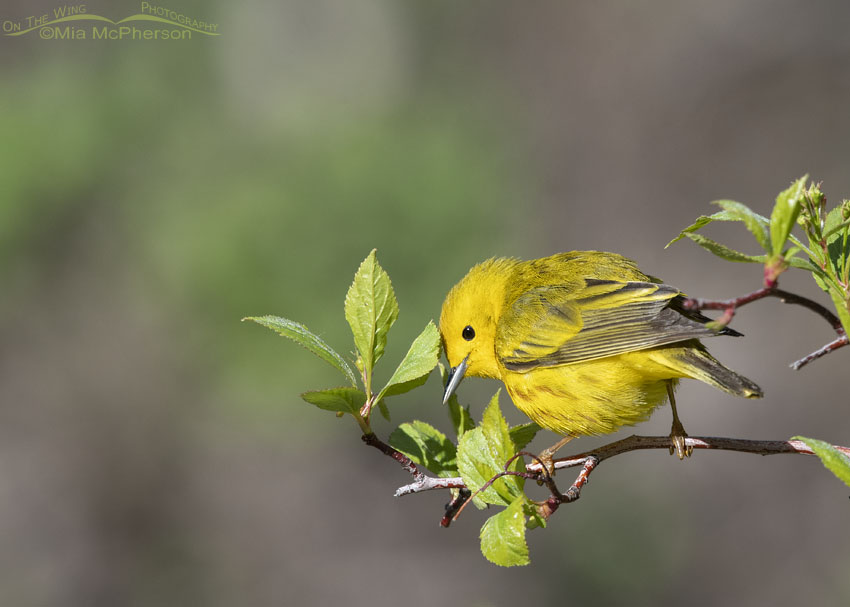 Foraging male Yellow Warbler – Nikon D500, f7.1, 1/1000, ISO 500, Nikkor 500mm VR with 1.4x TC, natural light
Foraging male Yellow Warbler – Nikon D500, f7.1, 1/1000, ISO 500, Nikkor 500mm VR with 1.4x TC, natural light
I hope that I will have many more chances to photograph the Yellow Warblers I find here because they are a challenge and because they are such beautiful little birds.
Life is good.
Mia
Click here to see more of my Yellow Warbler photos.


I just saw your previous set of photos of the warbler and these might even be better. Thanks Mia.
It sounds as if you inherited your eagle eyes from your mother. I suspect I wouldn’t see them until they moved.
Love these vibrant splashes of colour – and the wonderful time you are having with your mother.
Oh,Mia!!! What a wonderful, wonderful, happy series!!! There’s no way I could pick a favorite…love them all! We don’t see these little shards of sunshine here…last one I saw was on top of an Adirondack mountain years ago….so great to see this one…..
Beautiful photos! Such a perky little bird. We are inundated with warblers here in Wisconsin right now…so many different ones as they work their yearly migration. Always a joy to see. I’m sure you are loving every moment sharing this in person with your mother.
Hi! I am having a great visit with Mia and watching her photographing! Sharing and loving her passion of Birds! These were so beautiful to see and being there while Mia was taking photos of other birds since I am here! Love mom
Beautiful little birds! I love it when they pass through Central Texas!